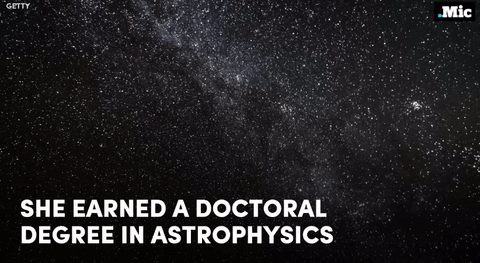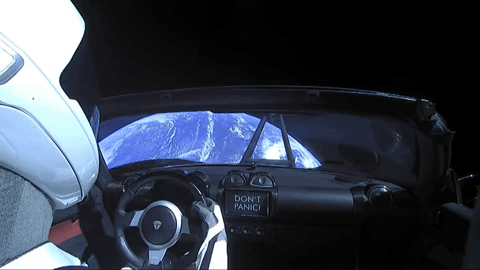Tumour Markers
Tumour Markers
Chemical biomarkers that can be elevated by the presence of one or more types of cancer, produced directly by the tumour or by non-tumour cells as a response to the presence of a tumour. Really great tests as can use just blood/urine, but aren’t the most specific and false positives do occur.

Alpha-fetoprotein (AFP)
Glycoprotein synthesised in yolk sac, the foetal liver, and gut - will be high in a foetus and during pregnancy.
<10 ng/mL is normal for adults
>500 ng/mL could indicate liver tumour
Normally:
Produced primarily by the liver in a developing foetus
Thought to be a foetal form of albumin
suppress lymphocyte activation and antibody production in adults (immune suppressant)
Binds bilirubin, fatty acids, hormones and metals
In cancer:
Detects hepatocarcinoma (liver cancer)
Risk factors: haemochromotosis, hep B, alcoholism - cell repair and growth from this damage leads to cancers
Present in non-pathogenic liver proliferation, including the growth and repair response to the above. This makes it hard to differentiate - AFP levels can be raised in patients with liver cancer risk factors due to the factors themselves, not a cancer. Not very diagnostic!! Used in combination with other tests/factors. Sensitivity and specificity ~75%
Other hepatocellular carcinoma markers:
γGT (γ-glutamyltransferase) - biliary damage
AFP mRNA (not always together with AFP! Might not be activated)
γGT mRNA elevated
Raised cytokines (IL-8, VEGF, TGF-B1)
ALT and AST elevated - liver disease
Carcinoembryonic antigen (CEA)
a set of highly related glycoproteins involved in cell adhesion. Potentially associated with innate immune system.
Normally:
produced in gastrointestinal tissue during foetal development
production stops before birth
present only at very low levels in the blood of healthy adults.
Cancer:
Elevated in almost all patients with colorectal cancer
Can monitor recurrence of cancer (when compared to previous test results for that patient) with a sensitivity of 80% and specificity of 70%
levels may also be raised in gastric, pancreatic, lung, breast and medullary thyroid carcinomas
also some non-neoplastic (not cancer) conditions like ulcerative colitis, liver disease, pancreatitis, COPD, Crohn’s disease, hypothyroidism - again, high risk groups for colorectal cancer - not a diagnostic test
Levels elevated in smokers.
Carbohydrate antigens (CA)
Including:
CA 19-9 - Pancreas
CA 15-3 Breast
CA 50 - Colorectal
CA 125 - ovarian
Levels rise only in disease states and particularly cancer, but will not rise in all patients.
Part 2 coming soon!
More Posts from Redplanet44 and Others
Eric Magnus Lensherr-sphere
Magnetospheres: How Do They Work?
The sun, Earth, and many other planets are surrounded by giant magnetic bubbles.

Space may seem empty, but it’s actually a dynamic place, dominated by invisible forces, including those created by magnetic fields. Magnetospheres – the areas around planets and stars dominated by their magnetic fields – are found throughout our solar system. They deflect high-energy, charged particles called cosmic rays that are mostly spewed out by the sun, but can also come from interstellar space. Along with atmospheres, they help protect the planets’ surfaces from this harmful radiation.
It’s possible that Earth’s protective magnetosphere was essential for the development of conditions friendly to life, so finding magnetospheres around other planets is a big step toward determining if they could support life.
But not all magnetospheres are created equal – even in our own backyard, not all planets in our solar system have a magnetic field, and the ones we have observed are all surprisingly different.

Earth’s magnetosphere is created by the constantly moving molten metal inside Earth. This invisible “force field” around our planet has an ice cream cone-like shape, with a rounded front and a long, trailing tail that faces away from the sun. The magnetosphere is shaped that way because of the constant pressure from the solar wind and magnetic fields on the sun-facing side.

Earth’s magnetosphere deflects most charged particles away from our planet – but some do become trapped in the magnetic field and create auroras when they rain down into the atmosphere.

We have several missions that study Earth’s magnetosphere – including the Magnetospheric Multiscale mission, Van Allen Probes, and Time History of Events and Macroscale Interactions during Substorms (also known as THEMIS) – along with a host of other satellites that study other aspects of the sun-Earth connection.


Mercury, with a substantial iron-rich core, has a magnetic field that is only about 1% as strong as Earth’s. It is thought that the planet’s magnetosphere is stifled by the intense solar wind, limiting its strength, although even without this effect, it still would not be as strong as Earth’s. The MESSENGER satellite orbited Mercury from 2011 to 2015, helping us understand our tiny terrestrial neighbor.


After the sun, Jupiter has by far the biggest magnetosphere in our solar system – it stretches about 12 million miles from east to west, almost 15 times the width of the sun. (Earth’s, on the other hand, could easily fit inside the sun.) Jupiter does not have a molten metal core like Earth; instead, its magnetic field is created by a core of compressed liquid metallic hydrogen.

One of Jupiter’s moons, Io, has intense volcanic activity that spews particles into Jupiter’s magnetosphere. These particles create intense radiation belts and the large auroras around Jupiter’s poles.

Ganymede, Jupiter’s largest moon, also has its own magnetic field and magnetosphere – making it the only moon with one. Its weak field, nestled in Jupiter’s enormous shell, scarcely ruffles the planet’s magnetic field.
Our Juno mission orbits inside the Jovian magnetosphere sending back observations so we can better understand this region. Previous observations have been received from Pioneers 10 and 11, Voyagers 1 and 2, Ulysses, Galileo and Cassini in their flybys and orbits around Jupiter.

Saturn’s moon Enceladus transforms the shape of its magnetosphere. Active geysers on the moon’s south pole eject oxygen and water molecules into the space around the planet. These particles, much like Io’s volcanic emissions at Jupiter, generate the auroras around the planet’s poles. Our Cassini mission studies Saturn’s magnetic field and auroras, as well as its moon Enceladus.


Uranus’ magnetosphere wasn’t discovered until 1986 when data from Voyager 2’s flyby revealed weak, variable radio emissions. Uranus’ magnetic field and rotation axis are out of alignment by 59 degrees, unlike Earth’s, whose magnetic field and rotation axis differ by only 11 degrees. On top of that, the magnetic field axis does not go through the center of the planet, so the strength of the magnetic field varies dramatically across the surface. This misalignment also means that Uranus’ magnetotail – the part of the magnetosphere that trails away from the sun – is twisted into a long corkscrew.


Neptune’s magnetosphere is also tilted from its rotation axis, but only by 47. Just like on Uranus, Neptune’s magnetic field strength varies across the planet. This also means that auroras can be seen away from the planet’s poles – not just at high latitudes, like on Earth, Jupiter and Saturn.

Does Every Planet Have a Magnetosphere?
Neither Venus nor Mars have global magnetic fields, although the interaction of the solar wind with their atmospheres does produce what scientists call an “induced magnetosphere.” Around these planets, the atmosphere deflects the solar wind particles, causing the solar wind’s magnetic field to wrap around the planet in a shape similar to Earth’s magnetosphere.

What About Beyond Our Solar System?
Outside of our solar system, auroras, which indicate the presence of a magnetosphere, have been spotted on brown dwarfs – objects that are bigger than planets but smaller than stars.
There’s also evidence to suggest that some giant exoplanets have magnetospheres. As scientists now believe that Earth’s protective magnetosphere was essential for the development of conditions friendly to life, finding magnetospheres around exoplanets is a big step in finding habitable worlds.
Make sure to follow us on Tumblr for your regular dose of space: http://nasa.tumblr.com
Disabled? Most abled person!











follow @the-future-now
The perfect news in EVERY WAY.




I have nothing to do with this mission, but damn do I feel proud. What peculiar beings we, humans, are. Sending into space a doll in a spacesuit, named “Starman”, seated in an electric car, with a sign “Don’t Panic” on the car’s dashboard, blasting David Bowie’s “Life On Mars?”. I’m not crying, you are.
““One of the holy grails of biomaterials research has been working out a way to get skin to grow onto and attach to metals and plastics without the risk of infection. It looks like this design and technique may have solved the problem,” says Dr Stynes, who is researching his PhD at the University of Melbourne. “It could pave the way for fully implantable robotics, prosthetics, catheters, intravenous lines, and the reconstruction of surgical defects with artificial materials.” Professor Richard Page, Director of Orthopaedics and the Centre of Orthopaedic Research and Education at Barwon Health and Deakin University, said the ability of the scaffold to make the skin think it was growing on other skin is potentially a major finding.”
— Breaking the Skin Barrier Can Lead to Breakthroughs in Robotics to Human Interface
Biggest Ferris wheel ever: the Jupiter Eye





NASA just released Juno’s brand-new images of Jupiter’s red spot — and they’re jaw-dropping
follow @the-future-now
Self-healing material a breakthrough for bio-inspired robotics
Many natural organisms have the ability to repair themselves. Now, manufactured machines will be able to mimic this property. In findings published this week in Nature Materials, researchers at Carnegie Mellon University have created a self-healing material that spontaneously repairs itself under extreme mechanical damage.

This soft-matter composite material is composed of liquid metal droplets suspended in a soft elastomer. When damaged, the droplets rupture to form new connections with neighboring droplets and reroute electrical signals without interruption. Circuits produced with conductive traces of this material remain fully and continuously operational when severed, punctured, or had material removed.
Keep reading

Flame Nebula in Orion - For more images of the cosmos Click Here
What doesn't tear you makes you doper


Substitutional defects ( 2 ) are point defects in which an impurity atom takes the place of a native atom within the crystal lattice. Semiconductors often intentionally add substitional defects through doping, such as adding boron or phosphorous to silicon to create an n- or p-type semiconductor, and certain alloys include extraneous elements to create substitional defects for solution hardening purposes.
Image source.

NASA eyes versatile carbon-nanotube technology for spaceflight applications
An ultra-dark coating comprised of nearly invisible shag rug-like strands made of pure carbon is proving to be highly versatile for all types of spaceflight applications.
In the most recent application of the carbon-nanotube coating, optical engineer John Hagopian, a contractor at NASA’s Goddard Space Flight Center in Greenbelt, Maryland, and Goddard scientist Lucy Lim are growing an array of miniscule, button-shaped bumps of multi-walled nanotubes on a silicon wafer.
The dots, which measure only 100 microns in diameter—roughly the size of a human hair—would serve as the “ammunition” source for a mini-electron probe. This type of instrument analyzes the chemical properties of rocks and soil on airless bodies, like the Moon or an asteroid.
Although the probe is still early in its technology development, it’s showing promise, said Lim, who is using funding from NASA’s Planetary Instrument Concepts for the Advancement of Solar System Observations Program, better known as PICASSO, to advance the concept.
Read more.
-
 herpainterlover liked this · 2 years ago
herpainterlover liked this · 2 years ago -
 herpainterlover reblogged this · 2 years ago
herpainterlover reblogged this · 2 years ago -
 swimmingprincessbouqet liked this · 3 years ago
swimmingprincessbouqet liked this · 3 years ago -
 day-knight reblogged this · 4 years ago
day-knight reblogged this · 4 years ago -
 day-knight liked this · 4 years ago
day-knight liked this · 4 years ago -
 drnaseem-mirbagheri reblogged this · 4 years ago
drnaseem-mirbagheri reblogged this · 4 years ago -
 drnaseem-mirbagheri liked this · 4 years ago
drnaseem-mirbagheri liked this · 4 years ago -
 milkktenshi liked this · 4 years ago
milkktenshi liked this · 4 years ago -
 to-chase-a-nautilus liked this · 4 years ago
to-chase-a-nautilus liked this · 4 years ago -
 sourapplemango liked this · 4 years ago
sourapplemango liked this · 4 years ago -
 studyhard2studyabroad reblogged this · 4 years ago
studyhard2studyabroad reblogged this · 4 years ago -
 studyhard2studyabroad liked this · 4 years ago
studyhard2studyabroad liked this · 4 years ago -
 trippingspook liked this · 5 years ago
trippingspook liked this · 5 years ago -
 honeybun-girl liked this · 5 years ago
honeybun-girl liked this · 5 years ago -
 potassiumyle-blog liked this · 5 years ago
potassiumyle-blog liked this · 5 years ago -
 spriftianis liked this · 5 years ago
spriftianis liked this · 5 years ago -
 kathlaurz reblogged this · 5 years ago
kathlaurz reblogged this · 5 years ago -
 kathlaurz liked this · 5 years ago
kathlaurz liked this · 5 years ago -
 quantum-man reblogged this · 5 years ago
quantum-man reblogged this · 5 years ago -
 seeorseem liked this · 5 years ago
seeorseem liked this · 5 years ago -
 coddiwompleing reblogged this · 6 years ago
coddiwompleing reblogged this · 6 years ago -
 coddiwompleing liked this · 6 years ago
coddiwompleing liked this · 6 years ago -
 elizabethsgenes liked this · 6 years ago
elizabethsgenes liked this · 6 years ago -
 stefidustfinger2 liked this · 6 years ago
stefidustfinger2 liked this · 6 years ago -
 torturedbyboredom liked this · 6 years ago
torturedbyboredom liked this · 6 years ago -
 stupendousclodhumangiant-blog liked this · 6 years ago
stupendousclodhumangiant-blog liked this · 6 years ago -
 pasareej liked this · 6 years ago
pasareej liked this · 6 years ago -
 sa1el reblogged this · 6 years ago
sa1el reblogged this · 6 years ago -
 sa1el liked this · 6 years ago
sa1el liked this · 6 years ago -
 divingpigeon liked this · 6 years ago
divingpigeon liked this · 6 years ago -
 docresa reblogged this · 6 years ago
docresa reblogged this · 6 years ago -
 ivofcoffee liked this · 6 years ago
ivofcoffee liked this · 6 years ago -
 fares99fa liked this · 6 years ago
fares99fa liked this · 6 years ago -
 tiziano1 liked this · 6 years ago
tiziano1 liked this · 6 years ago -
 partnoir4 reblogged this · 6 years ago
partnoir4 reblogged this · 6 years ago -
 partnoir4 liked this · 6 years ago
partnoir4 liked this · 6 years ago
